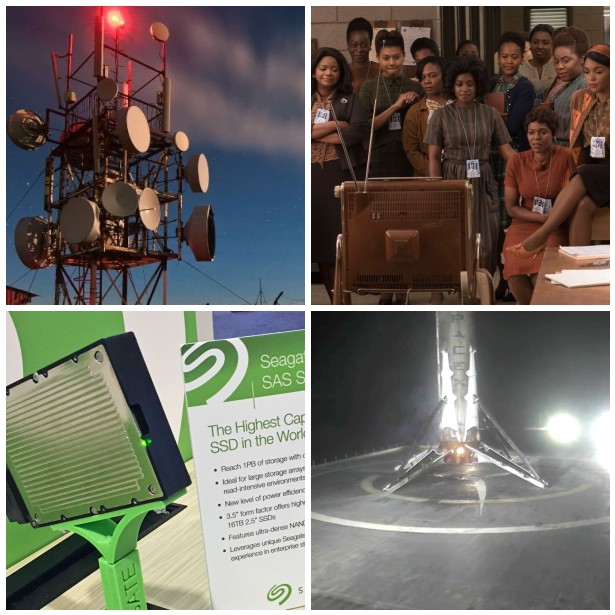Hidden Figures RAID Code 42 for HIV vulnerability

This week the geeks discuss another successful SpaceX landing, Hidden Figures: the story of a group of brilliant mathematicians who made NASA’s Apollo mission possible, Seagate’s new super large storage, different storage redundancy options, programming school, and HIV.
SpaceX successfully lands its sixth Falcon 9 rocket after launch
Another one of SpaceX
New movie celebrates the true geniuses behind Apollo: NASA’s mathematicians
Hidden Figures focuses on the achievements of Katherine Johnson (played by Taraji Henson from Person of Interest and Empire), winner of the 2015 National Medal of Freedom. Johnson, now retired, was a mathematician at NASA whose work helped plot the trajectories of orbiting spacecraft. The movie is your classic “nerd genius makes good” tale, as teachers discover
Google is working on beaming high-speed wireless internet into your home
And now, the CEO of Google Access (the company that oversees Fiber), Craig Barrett, has announced that they
Seagate's new 60TB SSD dwarfs the others on the market
Seagate has just announced a whopping 60 TB solid-state-drive, the largest SSD yet with that sort of capacity. Unfortunately, the SSD is only meant for businesses, released as an addition to Seagate’s data center portfolio. With four times the capacity of the next leading SSD, this massive hard drive could hold up to 12,000 DVD movies or even a whopping 400 million photos. Just sit back and think about how ridiculous an amount of data that really is.
Dedi's CD ripping setup
- Ripping CDs like a nerd in mac os x – XLD sound ripping software that is highly accurate.
- QTS-Linux Combo NAS- a well-rounded private cloud solution centralizing storage and IoT applications
- I went Raid 6, currently using AFP for sharing, KODI+DLNA so far on Apple Lossless music files and MKV+transcoding for video rips.
Extended discussion on RAID
Miles and Dedi throw down on their strong RAID knowledge.
Can 42 US, a free coding school run by a French billionaire, actually work?
Welcome to 42 US, a free (as in beer) coding school, which opened just last month. Even the optional dorms are free. (Good news: laundry is also free! Bad news: you have to pay the dorm $75 a week if you want two meals a day.) Admittedly, it sounds totally crazy.
Scientists Discover a Vulnerability in HIV's Protective Shell
Somehow, HIV pulls off its retro act and this has remained somewhat of a mystery. According to the new paper, the answer lies in tiny pores (below) found throughout the virus’s protective capsid. The pores, which open and close in a manner similar to that of the iris in an eye, allow the virus to take in nucleotides while keeping its true nature hidden from the invaded cell until it’s too late.

